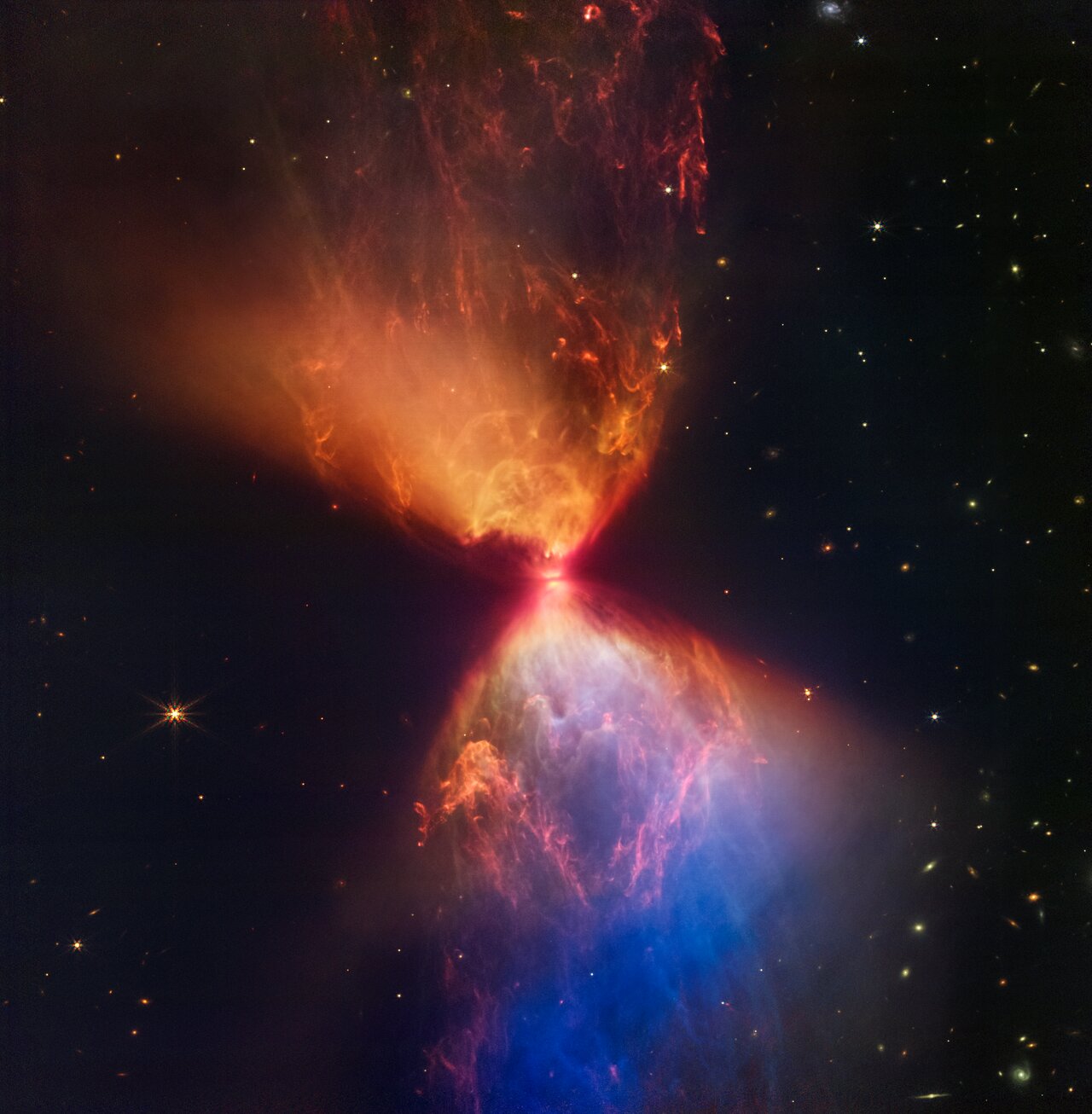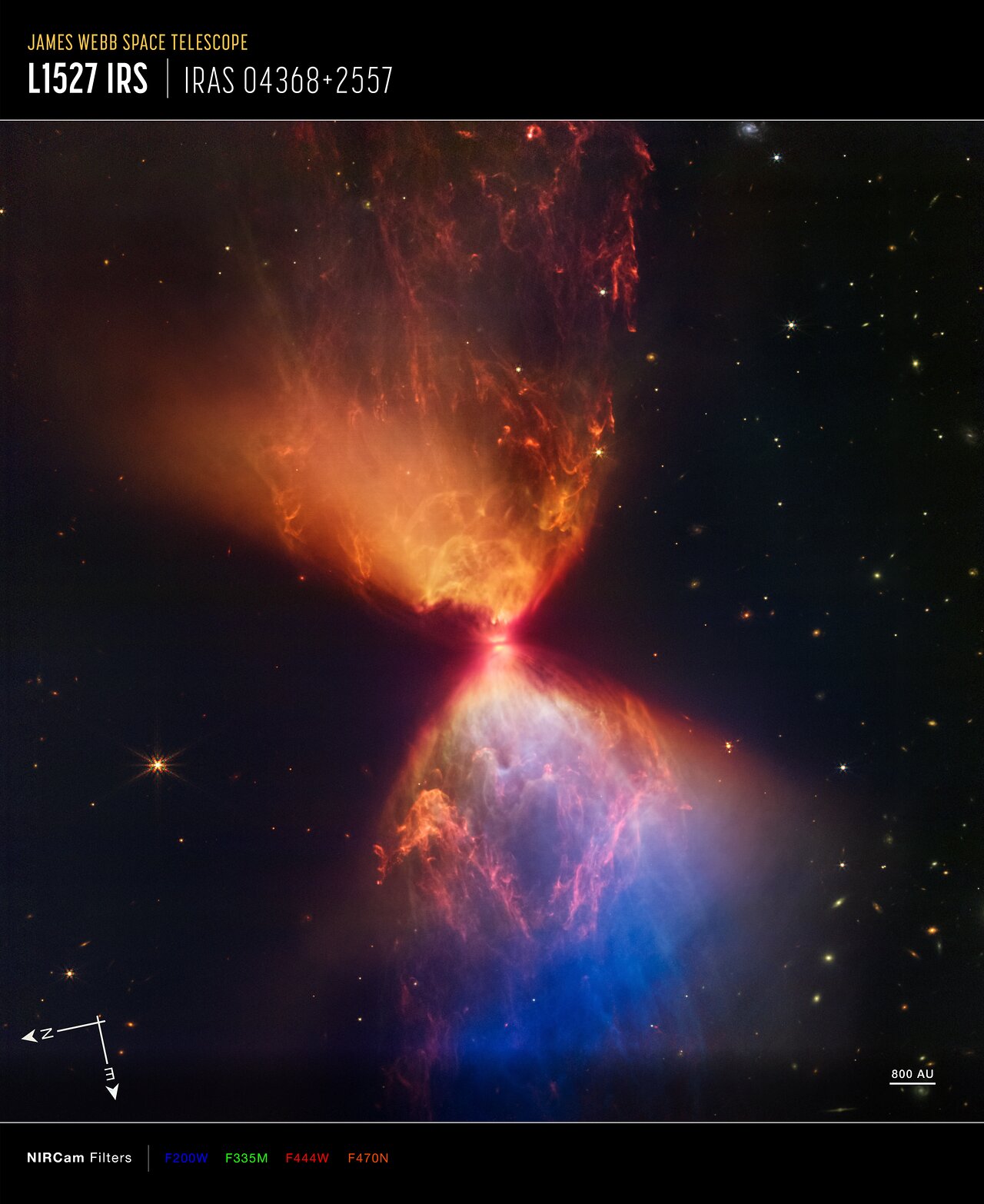James Webb Space Telescope Discovery
Clicking on each image will open the full resolution one. Try it!Clicking on "Raw images" image will yield all the relevant raw images.
Protostar L1527
The protostar L1527, shown in this image from the NASA/ESA/CSA James Webb Space Telescope, is embedded within a cloud of material that is feeding its growth. Material ejected from the star has cleared out cavities above and below it, whose boundaries glow orange and blue in this infrared view. The upper central region displays bubble-like shapes due to stellar ‘burps,’ or sporadic ejections. Webb also detects filaments made of molecular hydrogen that has been shocked by past stellar ejections. Intriguingly, the edges of the cavities at upper left and lower right appear straight, while the boundaries at upper right and lower left are curved. The region at lower right appears blue, as there’s less dust between it and Webb than the orange regions above it.
Credit: NASA, ESA, CSA, and STScI, J. DePasquale (STScI)
 Protostar L1527
Protostar L1527
 This image of the nebula L1527, captured by Webb’s Near-Infrared Camera (NIRCam), shows compass arrows, scale bar, and colour key for reference.
The north and east compass arrows show the orientation of the image on the sky. Note that the relationship between north and east on the sky (as seen from below) is flipped relative to direction arrows on a map of the ground (as seen from above).
The scale bar is labelled in astronomical units (au), which is the average distance between Earth and the Sun, or 150 million kilometres.
This image shows invisible near-infrared wavelengths of light that have been translated into visible-light colours. The colour key shows which NIRCam filters were used when collecting the light. The name of each filter is shown in the visible light colour used to represent the infrared light that passes through that filter.
This image of the nebula L1527, captured by Webb’s Near-Infrared Camera (NIRCam), shows compass arrows, scale bar, and colour key for reference.
The north and east compass arrows show the orientation of the image on the sky. Note that the relationship between north and east on the sky (as seen from below) is flipped relative to direction arrows on a map of the ground (as seen from above).
The scale bar is labelled in astronomical units (au), which is the average distance between Earth and the Sun, or 150 million kilometres.
This image shows invisible near-infrared wavelengths of light that have been translated into visible-light colours. The colour key shows which NIRCam filters were used when collecting the light. The name of each filter is shown in the visible light colour used to represent the infrared light that passes through that filter.
 Raw images
Raw images